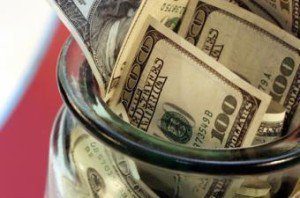 Nearly three quarters of Americans are struggling with the size and scale of their debts, and mortgage debt is the largest contributing factor, according to new findings Northwestern Mutual's 2017 Planning & Progress Study.
Nearly three quarters of Americans are struggling with the size and scale of their debts, and mortgage debt is the largest contributing factor, according to new findings Northwestern Mutual's 2017 Planning & Progress Study.
The study found that 45 percent of Americans in debt spend up to half their money every month in debt payments. Twenty-nine percent of those monthly debt payments go to mortgage. Credit card bills make up another 20 percent, and for Millennials, student loan debt is nearly a quarter of payments made every month.
The weight of the debt, according to Northwestern Mutual, is indeed heavy. Nearly half of Americans are carrying at least $25,000 in debt, and the average debt on Americans’ backs is $37,000‒‒and that excludes mortgage payments. Ten percent are carrying debt above $100,000. Add to that, another third told Northwestern Mutual they will be in debt between 6 and 20 years, and 14 said they expect to be in debt for the rest of their lives.
"Building financial security while saddled with high debt is like running a race with a weight around your ankle," said Rebekah Barsch, vice president of planning, Northwestern Mutual. "Reducing debt accumulation and being proactive about strategically managing the debt you already have is integral to a sound financial plan."
Reducing debt could go a long way towards easing mounting anxiety as well, the report noted. According to Northwestern Mutual, 40 percent of Americans said debt has a substantial or moderate impact on financial security. The same number said they consider their debts a high or moderate source of anxiety.
The same number also said they’d use a surprise $2,000 windfall to pay down debts. More than a third said they pay as much as they can towards their debts every month, while 17 percent said they just pay monthly minimums.
Yet despite recognizing the downsides of debt, the lure of spending remains strong. After covering necessities, Americans said 40 percent of their monthly income goes toward discretionary spending on entertainment, leisure travel, and hobbies. In fact, when asked what financial pitfalls they are prone to, one quarter of Americans flagged excessive or frivolous spending.
"One of the hardest challenges is resisting the urge to splurge on items that are beyond our budget," said Barsch. "While giving into temptation can feel good in the short-term, it often contributes to an ongoing cycle of buy and borrow that can become hard to escape. A thoughtful approach to debt repayment that minimizes interest and safeguards credit is essential, otherwise, you risk building your financial foundation on a house of cards‒‒literally."

 theMReport.com Your trusted source for mortgage banking news
theMReport.com Your trusted source for mortgage banking news








